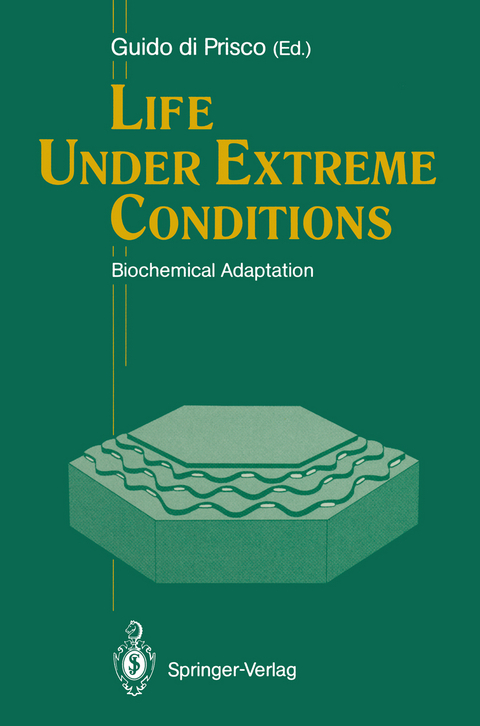
Life Under Extreme Conditions
Springer Berlin (Verlag)
978-3-642-76058-7 (ISBN)
How do living organisms manage to survive under extreme conditions, e.g. bacteria in hot springs or Antarctic fishes in ice-cold water? The underlying biochemical mechanisms are discussed here.
The Role of Antifreeze Glycopeptides and Peptides in the Freezing Avoidance of Cold-Water Fish.- An Overview of the Molecular Structure and Functional Properties of the Hemoglobins of a Cold-Adapted Antarctic Teleost.- Cold-Stable Microtubules from Antarctic Fish.- Life in Arctic Environments: Molecular Adaptation of Oxygen-Carrying Proteins.- Archaebacteria: Lipids, Membrane Structures, and Adaptation to Environmental Stresses.- How Nature Engineers Protein (Thermo)Stability.- Enzymes from Extreme Thermophilic Bacteria as Special Catalysts: Studies on a ?-Galactosidase from Sulfolobus solfataricus.- A Model for the Stabilization of a Halophilic Protein.
| Erscheint lt. Verlag | 8.12.2011 |
|---|---|
| Zusatzinfo | XI, 144 p. 4 illus. |
| Verlagsort | Berlin |
| Sprache | englisch |
| Maße | 155 x 235 mm |
| Gewicht | 253 g |
| Themenwelt | Naturwissenschaften ► Biologie ► Biochemie |
| Naturwissenschaften ► Biologie ► Ökologie / Naturschutz | |
| Naturwissenschaften ► Biologie ► Zellbiologie | |
| Schlagworte | Adaptation • Antarctica • Antarctic Fishes • Antarktische Fische • Bacteria • biomolecule • Cold Adaptation • Environment • Enzyme • enzymes • Kälte-Adaptation • Lipid • Membrane • Nucleic acid • Protein • Proteine • Protein Folding • proteins • stability • Stress • Temperature • Thermostabilität • Thermostability |
| ISBN-10 | 3-642-76058-9 / 3642760589 |
| ISBN-13 | 978-3-642-76058-7 / 9783642760587 |
| Zustand | Neuware |
| Haben Sie eine Frage zum Produkt? |
aus dem Bereich


